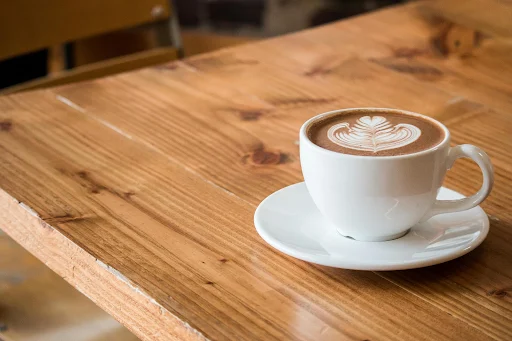The Fascinating History of Coffee: From Ancient Beans to Global Brew
Coffee is one of the most beloved beverages in the world, with millions of cups consumed daily across the globe. But beyond its energizing aroma and taste lies a captivating history that spans centuries, continents, and cultures. The story of coffee is rich, complex, and deeply intertwined with the rise of global trade, colonization, and social transformation.
Origins in Ethiopia: The Legendary Beginning
The history of coffee begins in the ancient highlands of Ethiopia, where legend tells of a young goat herder named Kaldi. According to folklore, Kaldi noticed that his goats became unusually energetic and lively after eating the red berries of a certain plant. Curious, he tried the berries himself and felt a sudden boost of energy.
Kaldi brought his discovery to a local monastery, where monks began brewing the berries into a drink to help them stay awake during long hours of prayer. This early version of coffee quickly gained popularity in the region.
While this story is largely mythical, it reflects the general consensus that coffee originated in Ethiopia, where wild coffee trees still grow.
Coffee Spreads to the Arab World
By the 15th century, coffee had made its way across the Red Sea to Yemen, where Sufi mystics began cultivating it for spiritual use. The port city of Mocha became a major center of coffee trade (yes, that’s where “mocha” gets its name). In Sufi monasteries, coffee helped monks stay awake during nighttime devotions, and its use soon spread throughout Arabia.
The first real coffeehouses—called qahveh khaneh—emerged in cities like Mecca and Constantinople (modern-day Istanbul). These establishments became centers of social activity, discussion, and even political debate. Coffeehouses were sometimes called “Schools of the Wise,” where poets, artists, merchants, and scholars would gather.
The Arrival in Europe: Controversy and Acceptance
Coffee entered Europe in the 17th century, initially through trade with the Ottoman Empire. It quickly became popular in cities like Venice, London, Paris, and Vienna, although not without resistance. Some Christians called it the “bitter invention of Satan,” and it was even condemned by clerics.
However, Pope Clement VIII is said to have tasted coffee and found it so delicious that he gave it his blessing. From there, coffee’s popularity exploded in Europe, and coffeehouses began to spring up everywhere.
In England, coffeehouses were known as “penny universities” because for the price of a cup of coffee, one could engage in lively intellectual debate. Notably, Lloyd’s of London, one of the world’s largest insurance markets, began as a coffeehouse where sailors and merchants exchanged shipping news.
The Global Expansion: Coffee as Colonial Commodity
As demand grew, European powers began cultivating coffee in their overseas colonies. The Dutch introduced coffee to Java (Indonesia) in the 1600s, while the French brought it to the Caribbean, and the Portuguese planted it in Brazil.
Brazil, in particular, became a coffee powerhouse. By the 19th century, it was the largest producer of coffee in the world, a title it still holds today. Unfortunately, much of this expansion was driven by colonial exploitation and slave labor, especially in Brazil and the Caribbean.
The global coffee trade reshaped economies, societies, and even ecosystems. Coffee became a major cash crop, and its cultivation had long-lasting impacts—both positive and negative—on indigenous communities and the environment.
Industrialization and the Rise of Modern Coffee Culture
The 19th century brought major changes to the way coffee was produced and consumed. In 1864, brothers John and Charles Arbuckle introduced pre-roasted coffee to the U.S. market under the brand name “Ariosa.” Before this, coffee was usually sold green, and customers had to roast it themselves at home.
Later, the invention of instant coffee and the rise of vacuum packaging made coffee even more accessible. These innovations transformed coffee from a luxury into a household staple.
The 20th century saw the rise of large coffee companies like Nestlé, which introduced Nescafé during World War II, providing a convenient coffee option for soldiers.
Meanwhile, coffee culture flourished in various forms around the world:
In Italy, espresso became the drink of choice, leading to the rise of espresso bars.
In America, the diner-style drip coffee became popular.
In Japan, canned coffee and vending machines offered on-the-go caffeine.
The Coffeehouse Renaissance: Starbucks and the Third Wave
The 1990s marked a major shift in coffee culture with the rise of Starbucks and other specialty coffee chains. Starbucks popularized espresso-based drinks like lattes, cappuccinos, and macchiatos, turning coffee shops into cozy spaces for socializing, working, and relaxing.
This era also saw the beginning of the so-called Third Wave Coffee Movement, which emphasized:
Sustainability
Direct trade with farmers
Single-origin beans
Artisanal roasting
Third-wave coffee shops focus on quality over quantity, treating coffee more like wine, with tasting notes and brewing precision.
Coffee Today: A Global Phenomenon
Today, coffee is one of the most traded commodities in the world, second only to oil. More than 2.25 billion cups are consumed every day. Countries like Brazil, Vietnam, Colombia, and Ethiopia remain key producers, while the United States, Germany, and Japan are among the biggest consumers.
Coffee has also become a symbol of cultural identity:
Turkish coffee is a UNESCO-recognized cultural heritage.
Swedish fika is a daily ritual involving coffee and pastries.
Ethiopian coffee ceremonies honor hospitality and tradition.
From humble beans in the Ethiopian highlands to sophisticated café menus around the globe, coffee has come a long way. Its story continues to evolve with technology, climate change, and shifting consumer habits.
Final Thoughts
The history of coffee is more than just the evolution of a beverage. It's a tale of human curiosity, exploration, trade, and connection. Whether you enjoy it as a morning ritual or an afternoon pick-me-up, every cup of coffee carries centuries of history and global influence.




No comments:
Post a Comment